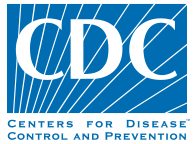HHS Agencies Involved in Ending the HIV Epidemic
The Ending the HIV Epidemic in the U.S. initiative (EHE) is being implemented through collaboration among agencies and offices across the U.S. Department of Health and Human Services (HHS), leveraging scientific advances in HIV prevention, diagnosis, treatment, and care, along with the programs and expertise of each agency and office.
Office of the Assistant Secretary for Health

The Office of the Assistant Secretary for Health (OASH) leads this cross-agency initiative through the Office of Infectious Disease and HIV/AIDS Policy (OIDP), providing overall project coordination and management, monitoring progress, tracking progress toward achieving the EHE goals via the EHE dashboard, and sharing information through HIV.gov. OASH’s Minority HIV/AIDS Fund also supports several EHE activities.
Centers for Disease Control and Prevention

The Centers for Disease Control and Prevention (CDC) works closely with state and local governments, communities, people with and at risk for HIV, as well as federal partners to expand the use of the highest-impact HIV prevention strategies: Diagnose, Treat, Prevent, and Respond. CDC is providing funding and technical assistance to state and local health departments in the 57 EHE jurisdictions to implement integrated jurisdictional plans to end the HIV epidemic.
Health Resources and Services Administration

Through its Ryan White HIV/AIDS Program and its Health Center Program, the Health Resources and Services Administration (HRSA) plays a critical role in diagnosing, treating, preventing, and responding to HIV. The Health Center Program is providing funding and technical assistance to health centers in the initiative’s 57 priority jurisdictions to increase HIV testing by conducting expanded outreach within their communities and increase routine and risk-based HIV testing of health center patients. These health centers also are expanding access to PrEP for patients experiencing risk for HIV. HRSA’s Ryan White HIV/AIDS Program is focusing on linking people living with HIV who are either newly diagnosed, or are diagnosed but currently not in care, to the essential HIV care, treatment, and support services needed to help them achieve and maintain an undetectable viral load. Read more about HRSA’s EHE activities.
Indian Health Service

The Indian Health Service (IHS) provides health services to approximately 2.6 million American Indians and Alaska Natives from 573 federally recognized tribes in 37 states, through a network of over 605 hospitals, clinics, and health stations. As part of a comprehensive public health approach, the IHS focuses its EHE efforts on coordinating and promoting HIV prevention and treatment activities in the communities most impacted. In partnership with Native communities, the IHS promotes HIV, HCV, and STD testing, prevention, and treatment using innovative tools such as telehealth, electronic health record clinical reminders, and PrEP guidelines.
National Institutes of Health

The National Institutes of Health (NIH) is supporting implementation science research conducted in collaboration with community partners in EHE jurisdictions to determine how best to leverage existing, highly effective tools to diagnose, prevent and treat HIV. With funding from NIH these implementation science research activities are led by Centers for AIDS Research (CFARs) and AIDS Research Centers (ARCs). NIH also informs HHS partners on best practices based on state-of-the-art biomedical research findings, and by collecting and disseminating data on the effectiveness of approaches. NIH’s Office of AIDS Research (OAR) provides scientific and management coordination of all HIV/AIDS research conducted across NIH, whose discoveries are essential to achieving the goals of EHE. Read about NIH’s EHE-funded research projects.
Substance Abuse and Mental Health Services Administration

The Substance Abuse and Mental Health Services Administration (SAMHSA) is utilizing its expertise to address the intersection of HIV and substance use disorders and help ensure that appropriate and effective behavioral health interventions are implemented as part of the national plan to end the HIV epidemic in United States. SAMHSA’s ongoing efforts to increase providers of medication-assisted treatment (MAT) for individuals with substance use disorder help control the spread of HIV and provide access for people who use drugs to HIV prevention, diagnosis, and treatment. SAMHSA also works to increase access to syringe services programs (SSPs), reducing the spread of infectious diseases, including HIV and hepatitis C (HCV), via injection drug use. SAMHSA-supported activities serve as a bridge to MAT for opioid use disorder as well as other health services, including HIV and HCV diagnosis and treatment, and pre-exposure prophylaxis (PrEP).
Read about EHE Funding including details on awards made by the participating agencies.
